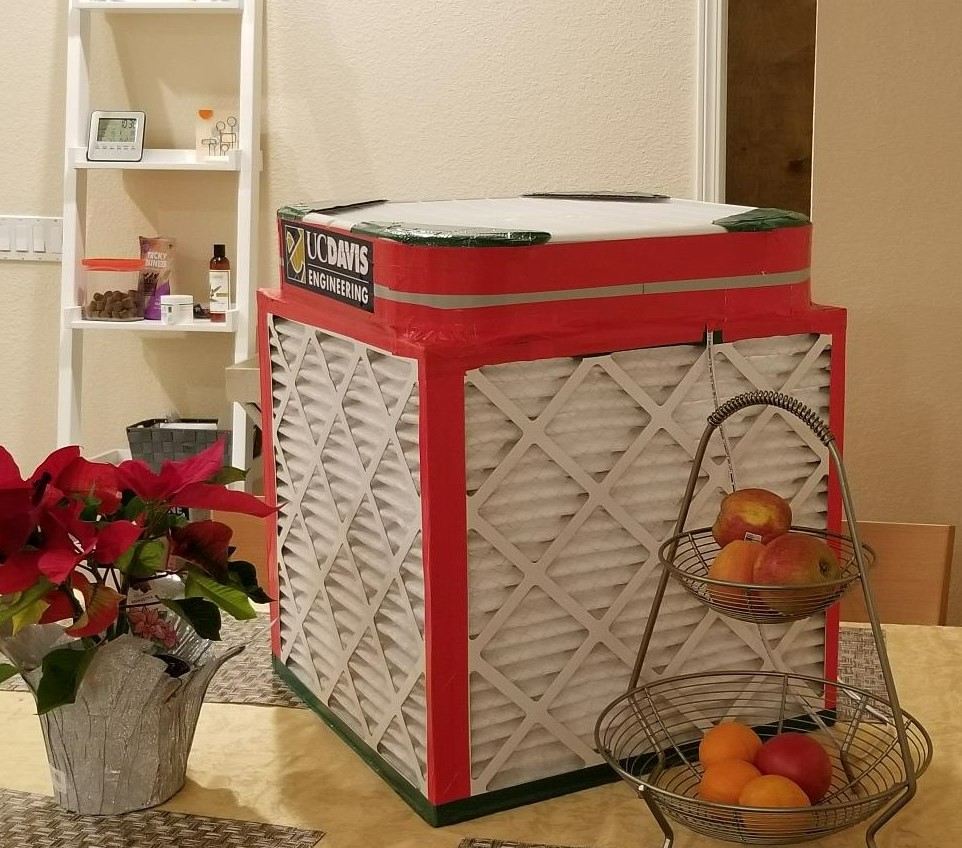
1/ Had a few folks ask where I’ve been in twitter discussions of COVID-19. Still here & doing what I can to promote & act on lowering inhalation dose of virus-laden aerosol particles. Continuing discussions w/ reporters & policymakers (when asked), but largely in the shadows.
2/ Been keeping up w/ twitter banter when I have breaks, some of which has been great & some enormously frustrating. My position as dean of @UCDavisCOE is demanding but exciting, and has been job 1 for the past 7 months. Hopeful to engage a bit more once the spring term ends. 

3/ My passion for promoting the importance of lowering inhalation dose of virus-laden respiratory aerosol particles has not waned since the early days of the pandemic. If you've followed me for awhile you will be familiar with my early tweets.
4/ Here is a webinar that I delivered as part of a National Academies workshop two years ago, stressing the importance of using inhalation dose as a roadmap for lowering risk.
nationalacademies.org/event/05-28-20…
nationalacademies.org/event/05-28-20…
5/ I have also continued to promote use of the #CorsiRosenthalBox as a PROVEN, highly-effective and low-cost (more accessible) technology for lowering inhalation dose in indoor spaces. 

6/ It has been one of the highlights of my career to see school children building boxes & learning how simple #CitizenEngineering can do so much good. This movement has taken on a life of its own. I am thrilled to be a cheerleader and advisor to those who are advancing it.
7/ I do not believe aiming for 4 or 6 ACH in schools or other indoor spaces is sufficiently aspirational & have written about how a combo of increased outdoor air supply and use of #CorsiRosenthalBox es can get us close to 10 equivalent ACH in classrooms.
8/ We can do it, folks. We can do it at a cost of less than $4 per student per year in a majority of K-12 classrooms. Think about that. The cost of ONE Grande Caffe Latte per student per year for equivalent ventilation that approaches that of hospital isolation rooms.
9/ We can achieve 24 to 27 equivalent ACH in typical dorm rooms, over 2 x the design for hospital isolation rooms in environments where unmasked young adults spend at least eight hours with each other every night.
10/ We can achieve similar values in bedrooms of homes & even up to 8 ACH in smaller, e.g., studio, apartments. This provides TREMENDOUS reduction in inhalation dose of aerosol particles, whether from respiratory systems of infected individuals, wildfire smoke, or other sources.
11/ In my own college, we acted to reduce inhalation dose of respiratory and other aerosol particles. Last fall we purchased 60 very good HEPA air cleaners and placed these in right-sized common indoor spaces, including office suites (2 in some spaces) and conference rooms.
12/ Since then we have built and distributed over 80 #CorsiRosenthalBox es in more common areas, teaching labs, graduate student offices, & more. We schedule many of our in-person meetings outdoors on picnic benches (our wonderful shop staff built additional benches for this). 





13/ These actions are easy and logical. None of it is rocket science, folks. None of it. It's simple. It's basic. It's founded on the fact that lowering inhalation dose of respiratory aerosol particles lowers risk of COVID-19.
14/ I am excited that this summer I will be starting a research laboratory. The focus will be on continued improvements to the #CorsiRosenthalBox, rigorous testing of performance at field sites, modifications to reduce noise.
15/ I will also be working on low-cost amendments to reduce other pollutants of both outdoor and indoor origin based on work that my students and I have done over the past 20 years - bring it to practice! Looking to recruit one or two students next fall.
16/ Doing what I can to remind anyone who will listen that reducing inhalation dose is a critical factor for reducing infection, long-COVID, & death. I will continue to promote & improve on more accessible tools that help lower the risk of COVID-19 infection.
Stay well, folks!
Stay well, folks!

• • •
Missing some Tweet in this thread? You can try to
force a refresh







